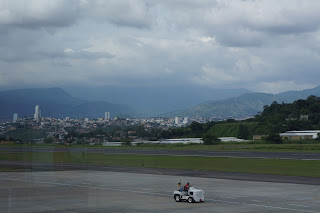The last couple days have been busy. First, we learned how to help with the Discover Scuba Diving program. This is offered to non-certified individuals who want to see what a dive would be like. In practice, this looks like an instructor and divemasters leading happy people about underwater, pointing out interesting fish. In reality, this looks like instructors and divemasters hauling about life size scuba dolls underwater. Practicing this, however, is tons of fun. Since we don't practicing with real participants, we took turns playing divemaster and participant to get an idea of what it would be like to escort a person while controlling almost all their equipment for them. To make it as real as possible, we made sure to completely ignore controlling our own buoyancy and even tried stunts like knocking off our divemaster's mask or reg (regulator). Best part of the dive, though, was spotting a pipefish!
We also had to practice demonstrating the 24 skills that Open Water students are expected to master. This meant not only doing them flawlessly ourselves, but also pointing out everything we were doing and going slow enough that it was good demonstration quality. As our instructors told us to expect, none of us passed all of them. However, I was happy to learn that I passed more than I need to redo.
 |
Our instructor, Maya (center), demonstrates leading two
DSD participants. |
 |
| A pipefish!!! |




















